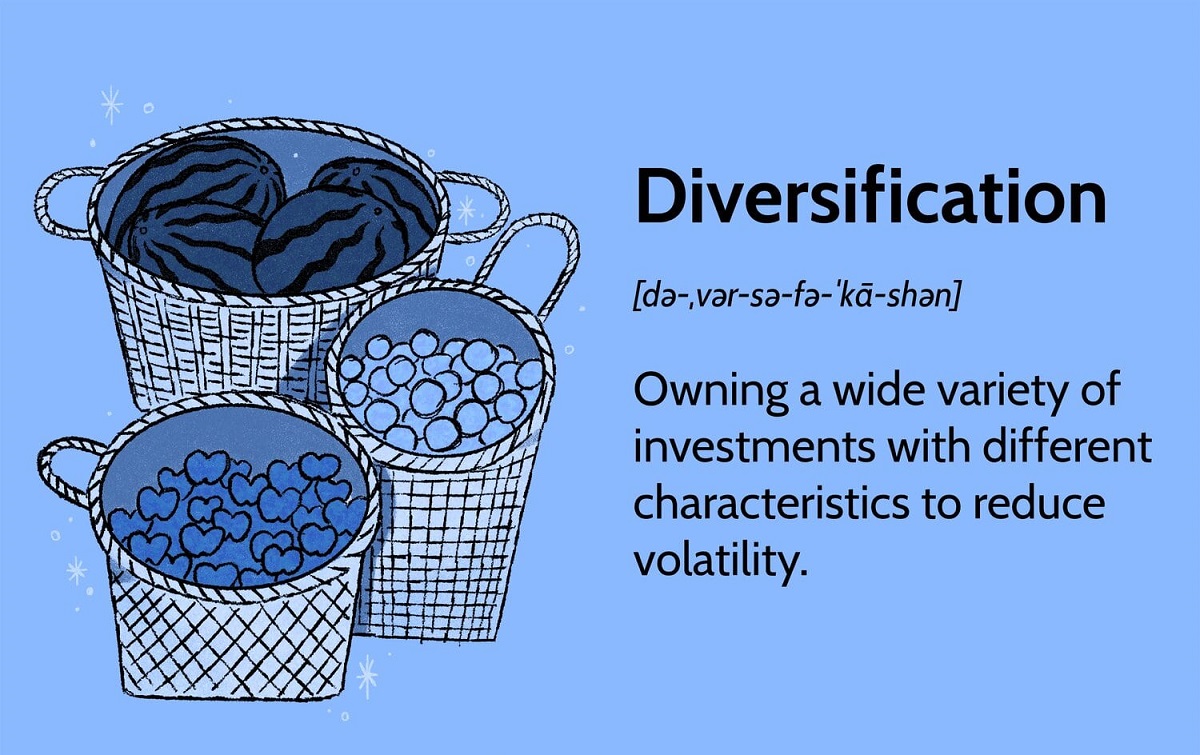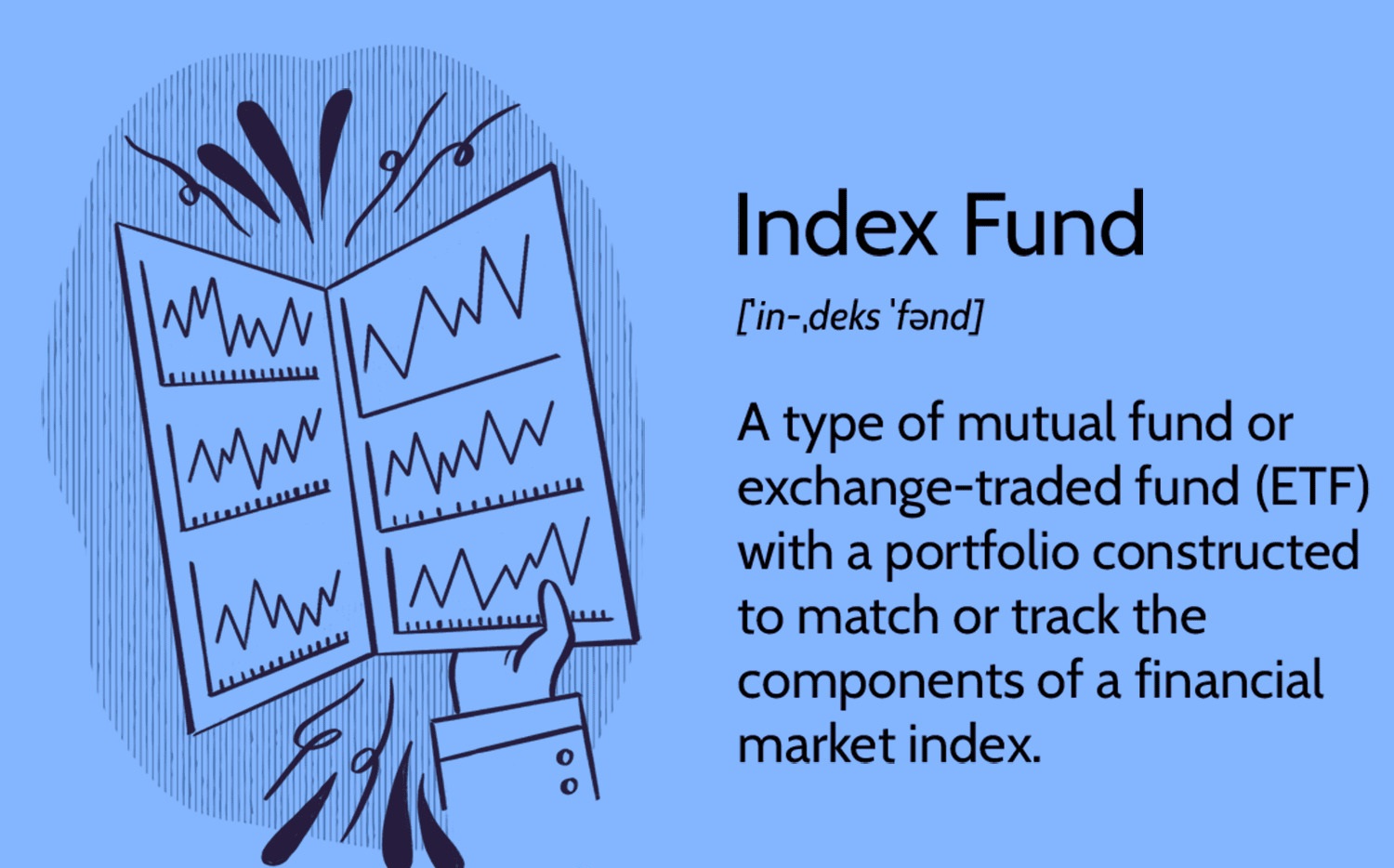Introduction
Diversifying your investments is a crucial aspect of achieving long-term financial success. It involves spreading your money across a variety of assets to reduce risk and improve the potential for higher returns. In today’s volatile and unpredictable market, diversification has become more important than ever.
When you have all your eggs in one proverbial basket, your investment portfolio becomes vulnerable to the fluctuations of a single asset or sector. By diversifying, you can mitigate the risks associated with any individual investment by spreading it across different assets and industries.
The concept of diversification is based on the principle that not all investments perform in the same way at the same time. By owning a mix of assets with different characteristics, you can potentially offset losses from one investment with gains from another. Diversifying allows you to participate in various sectors of the economy and helps protect against the potential pitfalls of concentrating all your investments in a single asset class.
Furthermore, diversification can also help manage risk constraints, such as liquidity, time horizon, and personal circumstances. Different investments have different levels of risk and return, and diversifying various types of assets can help balance out the overall risk in your portfolio. By spreading your investments across a mix of high-risk, moderate-risk, and low-risk assets, you can better align your portfolio with your financial goals and risk tolerance.
In this article, we will explore the importance of diversification in detail and provide insights on how to best diversify your investments to optimize your returns while managing risk effectively.
Why Diversify
Diversifying your investments offers several key advantages that can help you build a more resilient and profitable portfolio. Here are some compelling reasons why diversification is essential:
- Risk Management: By diversifying, you spread your investments across various assets, which reduces the impact of any single investment’s performance. If one investment underperforms, others have the potential to compensate and minimize overall portfolio losses.
- Maximizing Returns: Diversification allows you to tap into different asset classes that may perform well in different market conditions. While some investments may experience downturns, others may thrive, potentially balancing out your overall returns.
- Protection against Volatility: Different asset classes have varying levels of volatility. By diversifying, you can minimize the impact of market fluctuations and smooth out the overall performance of your portfolio.
- Expanding Opportunities: Diversification enables you to explore investments in various sectors, industries, and geographical regions. This broadens your investment opportunities and reduces the reliance on a single market or asset.
- Creating a Long-Term Strategy: Investing should be seen as a long-term endeavor. Diversification helps you build a well-balanced and appropriate investment strategy that aligns with your financial goals and risk tolerance over the long term.
In summary, diversification is essential for managing risk, maximizing returns, protecting against volatility, expanding investment opportunities, and building a robust long-term investment strategy. By diversifying effectively, you can optimize your portfolio’s performance while minimizing the potential downside of any individual investment.
Understanding Risk and Return
When it comes to investing, risk and return go hand in hand. It is crucial to comprehend the relationship between these two factors to make informed investment decisions. Here’s a breakdown of risk and return:
- Risk: In the investment world, risk refers to the uncertainty of an investment’s future returns. Different investments carry varying levels of risk. Generally, higher-risk investments have the potential for greater returns, but they also come with a higher probability of losses or fluctuations in value.
- Return: Return represents the financial gain or loss generated from an investment over a specific period. It can be in the form of income (dividends, interest) or capital appreciation (increase in the investment’s value). The potential return on an investment is typically higher for riskier assets.
- Risk-Return Tradeoff: The risk-return tradeoff is the principle that higher returns are associated with higher risks. Investors need to assess their risk tolerance and investment goals to strike an appropriate balance between risk and return. Diversification plays a crucial role in managing this tradeoff.
By diversifying your investments, you can achieve a balance between risk and return. Allocating your funds across a mix of assets with varying risk profiles can help stabilize your portfolio’s performance. High-risk investments provide the potential for substantial returns but also carry a higher chance of losses. Conversely, low-risk assets offer more stability but may provide lower returns.
It’s important to note that diversification does not eliminate risk entirely, but it can help mitigate it. Careful consideration should be given to the risk appetite and investment objectives of individual investors. Diversifying your portfolio allows you to spread risk across multiple assets, reducing the impact of any single investment’s negative performance on your overall portfolio.
Overall, understanding the relationship between risk and return and incorporating diversification into your investment strategy is essential for achieving a balanced and suitable portfolio that aligns with your financial objectives.
Different Types of Investments
When diversifying your portfolio, it’s important to consider different types of investments to achieve a well-rounded mix. Here are some common investment options:
- Stocks: Stocks represent ownership shares in individual companies. They offer the potential for long-term capital appreciation and dividends, but they also carry higher volatility and risk.
- Bonds: Bonds are debt securities issued by governments, municipalities, or corporations. They provide fixed interest payments over a specified period and are generally considered less risky than stocks.
- Mutual Funds: Mutual funds pool money from multiple investors to invest in a diversified portfolio of stocks, bonds, or other assets. They offer instant diversification and are managed by professional fund managers.
- Exchange-Traded Funds (ETFs): ETFs are similar to mutual funds but trade on stock exchanges like individual stocks. They offer diversification, lower fees, and the flexibility of trading throughout the day.
- Real Estate: Real estate investments can include residential or commercial properties, real estate investment trusts (REITs), or real estate crowdfunding platforms. They offer potential rental income and capital appreciation.
- Commodities: Commodities include physical goods such as gold, oil, natural gas, agricultural products, etc. Investing in commodities can provide diversification and a hedge against inflation.
- Options and Futures: Options and futures are derivatives contracts that allow investors to speculate or hedge against future price movements of stocks, commodities, or other assets. They can be complex and carry higher risk.
- Alternative Investments: Alternative investments cover a wide range of assets, including private equity, hedge funds, venture capital, and cryptocurrencies. These investments often have unique risk-return characteristics and may require more specialized knowledge and higher investment thresholds.
Keep in mind that each investment type has its own risk profile and potential return. Diversifying across these various asset classes can provide you with exposure to different markets and industries, lowering the overall risk of your portfolio.
Understanding the characteristics and risks associated with different types of investments is essential for building a diversified portfolio that matches your investment goals and risk tolerance.
Creating a Diversified Investment Portfolio
Building a diversified investment portfolio involves carefully selecting a mix of investments that span various asset classes and industries. Here are some steps to help you create a well-diversified portfolio:
- Assess Your Risk Tolerance: Start by evaluating your risk tolerance, which is influenced by factors such as your age, financial goals, and time horizon. This assessment will guide you in determining the balance between high-risk and low-risk investments that suits your comfort level.
- Set Clear Investment Goals: Define your investment objectives. Are you investing for retirement, education, or wealth accumulation? Setting clear goals will help shape your investment strategy.
- Allocate Funds Across Different Asset Classes: Determine the ideal asset allocation for your portfolio. Consider diversifying across stocks, bonds, cash, real estate, and other asset classes based on your risk tolerance and time horizon.
- Consider Geographic and Industry Diversification: Expand your diversification by investing in various geographic regions and industries. This helps minimize the impact of regional or sector-specific economic fluctuations on your portfolio.
- Research and Select Quality Investments: Conduct thorough research on individual investments within each asset class. Analyze their historical performance, future growth potential, and risk factors. Aim to select high-quality investments that align with your investment goals and risk tolerance.
- Spread Investments Across Different Stocks and Bonds: If you invest in individual stocks or bonds, diversify your holdings by spreading investments across different companies or issuers. Avoid concentrating a significant portion of your portfolio in a few select securities.
- Consider Dollar-Cost Averaging: Implement a dollar-cost averaging strategy by regularly investing a fixed amount of money over time rather than making lump-sum investments. This approach helps reduce the impact of market volatility and can potentially lead to better long-term investment outcomes.
- Rebalance Regularly: Review and rebalance your portfolio periodically. Over time, some investments may outperform while others may underperform. Rebalancing involves adjusting your portfolio back to its original asset allocation to maintain your desired risk profile.
- Seek Professional Guidance: If you are unsure about building a diversified portfolio, consider working with a financial advisor who can provide expertise and guidance tailored to your unique financial situation and goals.
Remember, creating a diversified investment portfolio is an ongoing process that requires regular monitoring and adjustments as market conditions change and your financial goals evolve. Stay informed, stay disciplined, and continue learning as you navigate the world of investments.
Asset Allocation Strategies
Asset allocation refers to the process of dividing your investment portfolio among different asset classes to achieve your desired risk and return objectives. Here are a few common asset allocation strategies:
- Aggressive Growth: This strategy emphasizes higher-risk investments, such as stocks and alternative investments, with the goal of achieving significant long-term capital appreciation. It is suitable for investors with a high risk tolerance and a long investment horizon.
- Moderate Growth: This strategy aims for a balanced approach by combining a mix of stocks, bonds, and possibly alternative investments. It seeks a balance between potential growth and risk mitigation. It is suitable for investors with a moderate risk tolerance.
- Conservative Growth: This strategy focuses more on capital preservation and generates income through more stable investments like bonds, dividend-paying stocks, and cash equivalents. It is suitable for investors with a lower risk tolerance or those nearing retirement.
- Income Generation: This strategy emphasizes investments that generate regular income, such as bonds, dividend-paying stocks, and real estate investment trusts (REITs). It is suitable for investors seeking a regular income stream with low to moderate risk.
- Tactical Asset Allocation: This strategy involves actively adjusting your portfolio’s asset allocation based on short-term market outlook and economic factors. It requires frequent monitoring and may involve a higher level of risk.
- Strategic Asset Allocation: This long-term approach involves setting a target asset allocation based on your goals, risk tolerance, and time horizon. It aims to maintain a consistent allocation over time, periodically rebalancing to bring the portfolio back in line with the targets.
It’s important to note that there is no one-size-fits-all asset allocation strategy. The best approach depends on your individual goals, risk tolerance, and investment timeline. Review your investment objectives periodically and adjust your asset allocation as needed to stay aligned with your financial goals.
Additionally, asset allocation strategies should consider factors such as diversification, liquidity needs, tax implications, and any unique circumstances that may impact your investment decisions. Consulting with a financial advisor can help you determine the most suitable asset allocation strategy for your specific situation.
Diversifying Within Asset Classes
Diversifying within asset classes involves spreading your investments across different securities or subcategories within a specific asset class. This further reduces risk and enhances the potential for improved returns. Here are some ways to diversify within asset classes:
- Stocks: Instead of investing in just a few individual stocks, consider diversifying by investing in a broad range of companies across various industries and market sectors. You can also consider investing in different-sized companies, such as small-cap, mid-cap, and large-cap stocks.
- Bonds: Diversify within the bond market by investing in bonds of different issuers, such as government, corporate, municipal, and international bonds. Additionally, consider diversifying across different bond maturities and credit ratings to manage interest rate and credit risk.
- Mutual Funds and ETFs: Investing in mutual funds or ETFs allows you to gain instant diversification within an asset class. These funds typically hold a diversified portfolio of securities, giving you exposure to a broad range of holdings without having to select individual stocks or bonds.
- Real Estate: Within real estate investing, diversify by considering residential and commercial properties, different geographical locations, and various real estate investment trusts (REITs) specializing in different sectors, such as residential, commercial, or industrial properties.
- Commodities: If you invest in commodities, consider diversifying across different types of commodities, such as precious metals, energy, agriculture, or industrial commodities. This can help reduce the risk associated with a single commodity’s price fluctuations.
- Options and Futures: If you trade options or futures, diversify by using a variety of underlying assets, strike prices, and expiry dates. This helps mitigate the risk associated with a single trade or position.
The key to diversifying within asset classes is to avoid overexposure to any single security, issuer, or subcategory. By spreading your investments across different securities within the same asset class, you can reduce the impact of poor performance from a particular investment and increase the likelihood of capturing gains from others.
Before making any investment decisions, thoroughly research and understand the risks associated with each investment option. Additionally, consider seeking professional advice to ensure that your diversification strategy aligns with your investment goals and risk tolerance.
Rebalancing Your Portfolio
Rebalancing your portfolio is an important step in maintaining diversification and aligning your investments with your long-term goals. Here’s what you need to know about portfolio rebalancing:
Over time, the performance of different asset classes can vary, causing your portfolio’s asset allocation to deviate from your original targets. This imbalance can expose your portfolio to higher risk or limit its potential for growth. Rebalancing involves periodically adjusting your asset allocation back to its intended proportions.
Here are the key steps to rebalance your portfolio:
- Review Your Portfolio: Regularly assess your portfolio’s performance and its current asset allocation. Compare it to your target allocations and identify any significant deviations.
- Identify Rebalancing Triggers: Set specific rules or triggers for when you’ll rebalance your portfolio. Common triggers include a predetermined timeframe (e.g., annually or semi-annually) or if a specific asset class or investment deviates from its target allocation by a certain percentage.
- Sell and Buy: If an asset class or investment has exceeded its target allocation, consider selling a portion of it to bring it back in line. Use the proceeds from the sale to buy more of the underweighted asset classes or investments.
- Consider Tax Implications: Rebalancing may trigger capital gains taxes. Minimize potential tax consequences by utilizing tax-efficient accounts like IRAs or 401(k)s for rebalancing transactions.
- Revisit and Adjust: Take this opportunity to reassess your investment goals, risk tolerance, and market conditions. Adjust your target allocations if necessary to reflect any changes in your circumstances or market outlook.
- Seek Professional Guidance: If you’re uncertain about rebalancing or need assistance, consult a financial advisor who can provide personalized advice based on your specific situation and goals.
Rebalancing ensures that your portfolio remains aligned with your risk tolerance and investment objectives. It helps you avoid being overexposed to asset classes that have performed well recently and allows you to take advantage of potential opportunities in underperforming asset classes.
Keep in mind that portfolio rebalancing should be approached with a long-term perspective. It is not about constantly chasing short-term market trends but rather maintaining a disciplined strategy that aligns with your overall financial plan.
Monitoring and Adjusting Your Investments
Monitoring and adjusting your investments is a crucial aspect of successful portfolio management. Here are some key considerations when it comes to monitoring and adjusting your investments:
- Regularly Review Your Portfolio: Monitor the performance of your investments on a regular basis. Reviewing your portfolio allows you to stay informed about how your investments are performing and identify any changes or trends in the market.
- Stay Informed: Stay updated on market news, economic indicators, and industry trends that may impact your investments. This knowledge can help you make informed decisions about when to adjust your portfolio.
- Assess Investment Objectives: Periodically reassess your investment goals and risk tolerance. Changes in your personal circumstances or financial objectives may require adjustments to your investment strategy.
- Consider Market Conditions: Evaluate market conditions and economic outlook to determine if any adjustments are necessary. During market downturns or periods of heightened volatility, it may be prudent to reassess your exposure to certain asset classes or sectors.
- Review Individual Investments: Analyze the performance and outlook of individual investments within your portfolio. Identify any underperforming or overperforming securities and consider whether adjustments need to be made.
- Stay Disciplined: Avoid making knee-jerk reactions to short-term market fluctuations. Stay focused on your long-term investment strategy and avoid emotional decision-making.
- Utilize Professional Guidance: Consider seeking advice from a financial advisor who can provide objective guidance and expertise. A professional can help you navigate market uncertainties and make strategic adjustments that align with your financial goals.
- Monitor External Factors: Keep an eye on external factors such as inflation, interest rates, and geopolitical events that can impact your investments. These external factors can influence market trends and the performance of different asset classes.
- Document and Track: Maintain records of all your investment transactions and performance to track your portfolio’s progress over time. This information can help you make informed decisions and evaluate the effectiveness of your investment strategy.
Remember, monitoring and adjusting your investments is an ongoing process. It requires diligence, research, and a commitment to staying informed about market conditions. By regularly assessing your investments and making strategic adjustments when necessary, you can optimize your portfolio and increase your chances of achieving your financial goals.
Conclusion
Diversifying your investments is an essential strategy for managing risk and maximizing returns. By spreading your investments across different asset classes, industries, and geographic regions, you can mitigate the impact of market volatility and potential downturns.
Understanding the relationship between risk and return is crucial in building a well-diversified portfolio that aligns with your investment goals and risk tolerance. By allocating your funds strategically and rebalancing your portfolio periodically, you can maintain a balanced asset allocation and ensure that your investments continue to align with your long-term objectives.
Remember to regularly monitor your investments, stay informed about market trends, and consider adjustments when necessary. This proactive approach will help you make informed decisions and capitalize on opportunities while managing risk effectively.
Creating a diversified investment portfolio requires careful planning, research, and consideration of your individual circumstances. If you are unsure about the process or need personalized guidance, it is beneficial to consult with a financial advisor who can provide expert advice tailored to your specific needs.
In summary, diversification is a powerful tool that can help increase the stability and potential profitability of your investments. By diversifying wisely, you can navigate the ever-changing financial landscape with confidence and strive for long-term financial success.

























